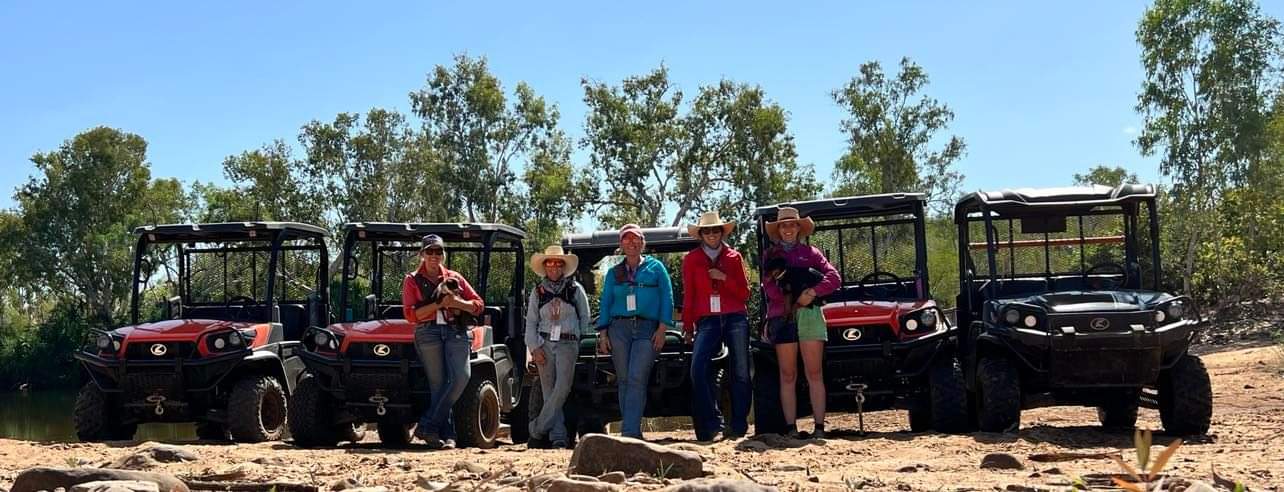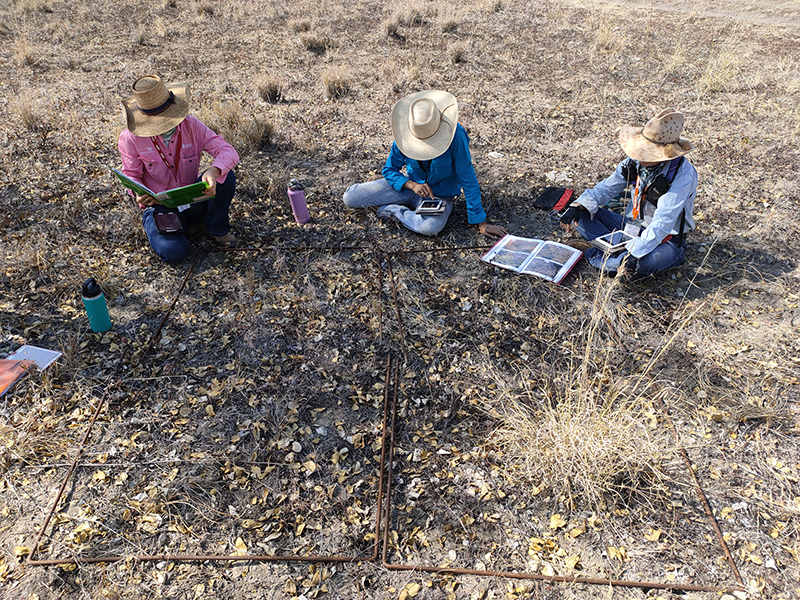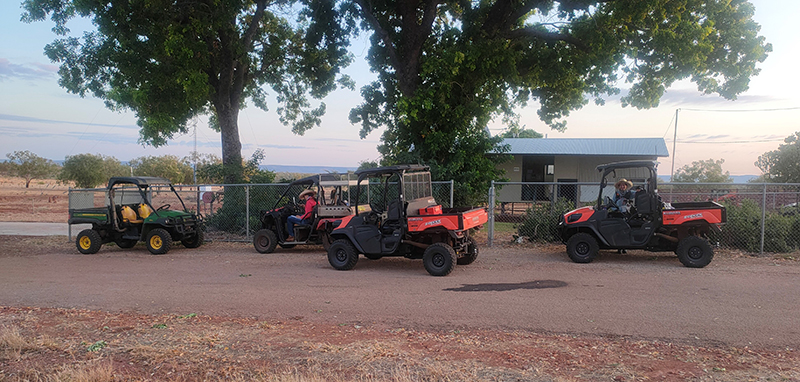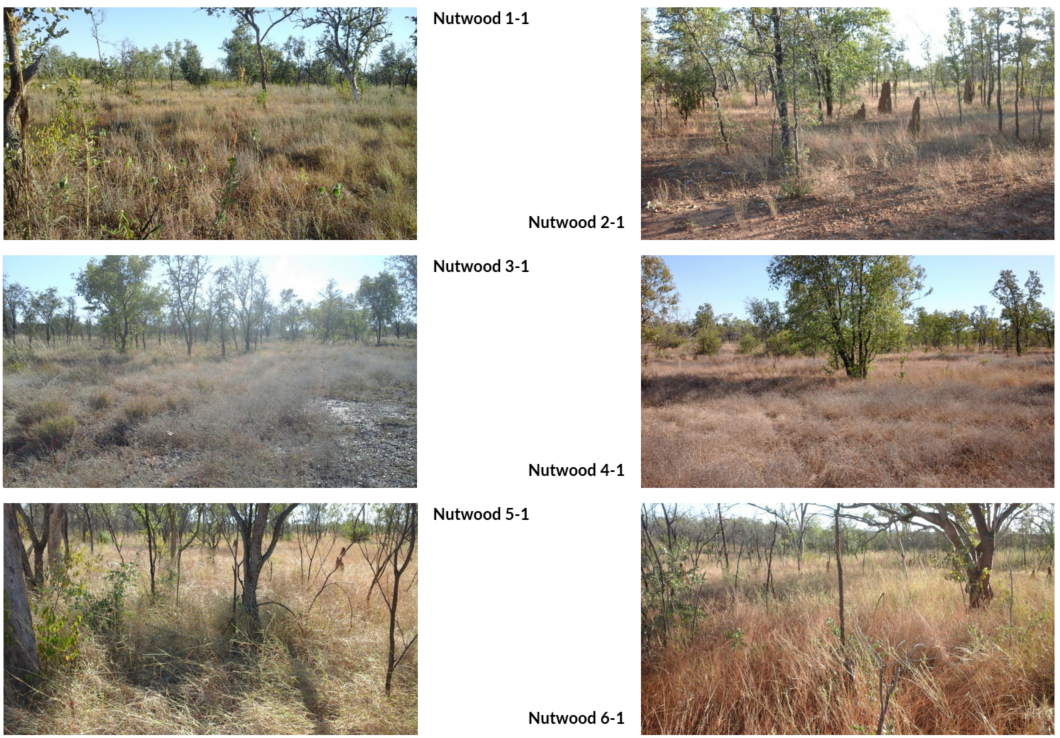Pasture monitoring on a research station

Department of Industry Tourism and Trade staff have been monitoring pastures at Victoria River Research Station (Kidman Springs) for the past 20 years. In 2001, the long term sustainable carrying capacity was calculated for all paddocks using 100 years of modelled pasture growth data and paddocks were set stocked accordingly. Each year, these paddocks are assessed for species composition, pasture yield, grazing scores, ground cover and in recent years tree basal area and foliage projected cover to measure the ongoing sustainability of using long term carrying capacity.
This year, 5 staff put their hand up to be grass counters- including 3 first-timers. Day one of Kidman Springs Pasture Sustainability (KSPS) 2022 was a crash course in pasture monitoring. We were given our equipment- a buggy, GPS, tablet, compass, dendrometer, species list, species books, maps, photo standards and two-way; and headed off to the paddock. Caz Pettit, the Project Leader, with the help of Mel Wooderson (Research Officer) ran a species identification class for us newbies - Georgia Glasson (Technical Officer), Christie Pearson (Research Officer) and Stacey Holzapfel (Extension Officer). We then calibrated our eyes to pasture yield using 2x2m quadrats, estimating the yield and then cutting and weighing it to reveal its actual weight. We were shown how to use a dendrometer to measure tree basal area foliage projective cover (FPC), and then we headed off to start collecting the paddock data.

Each paddock has a set of ‘points’, and each point has 5 ‘sites’. These sites are the same ones visited each year with the help of a GPS. Every morning, we were each allocated points, set our GPS to take us there, and headed off individually in our buggies to start grass counting. At each site, we needed to record data from 5 virtual quadrats. We’d park the buggy up where the GPS had the site marked, take 10 steps north and start there. A total of 5 quadrats are measured. Once those 5 quadrats were done, we’d jump back in our buggy and head to the next site - which is sometimes easier said than done when you have to cross a creek, or find yourself in an area of dense woodland.

At each quadrat, we recorded a variety of data onto our tablets: The top 4 species present and the proportion of each, yield, ground cover, defoliation, land condition, tree basal area, foliage projected cover, and took a photo. This data is then collated and analysed by Caz to show changes in these variables over the years and compare this with long term carrying capacity data.

To overcome the variation in individual estimates, at the end of each day we would head off to ‘standards’. Standards are 10 quadrats, that we all estimate the yield of each day. By recording yield for the same 10 quadrats every day, we can then see the variation in our estimates both between each other, and our own guesses on different days. The standards are cut, dried and weighed at the conclusion of KSPS to make sure we are all in the ball-park with our estimated yields.
The project provides long term scientifically validated pasture data for updating and improving carrying capacity and stocking rate advice. It also allows our researchers to monitor how ongoing seasonal variability impacts the feed base, provides historical data for new research, and contributes to the accuracy of pasture monitoring tools available to producers such as satellite technology.
It is safe to say KSPS 2022 was a success. We all had a great time, learnt a lot, had a few laughs and are keen to do it all again next year!
